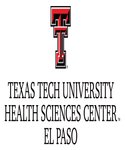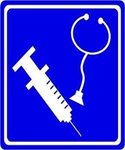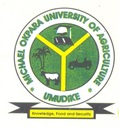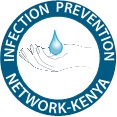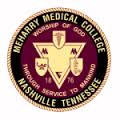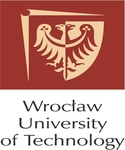Day 3 :
- Sympoisum on Anti-Viral Drug Combination Strategies
Session Introduction
Ting-Chao Chou
PD Science, LLC ,USA
Title: Computerized Simulation of Anti-HIV Drug Synergy in Vitro and in Clinical Trials Using the Chou-Talalay Combination Index Method
Time : 09:00 - 10:00

Biography:
Ting-Chao Chou (born in Taiwan), received Ph.D. in Pharmacology from Yale University in 1970, and postdoctoral fellowship from Johns Hopkins University. Member of Sloan-Kettering Cancer Center (MSKCC) and Professor of Pharmacology at Cornell University Graduate School of Medical Sciences. He is Honorary Professor at Chinese Academy of Medical Sciences (1993-) and Visiting Professor at five universities. He was Director of Preclinical Pharmacology Core at MSKCC where he retired on June 1st, 2013. Dr. Chou published 273 articles which has been cited 22,336 times, with h-index: 65. He is inventor/co-inventor of 38 U.S. Patents. Prof. Chou is the Founder of PD Science, LLC., USA.
Abstract:
Drug combination is most widely used in the treatment of the most dreadful diseases such as AIDS and cancer. Quantitative determination of synergism is essential for efficient discovery and development of anti-HIV cocktails. Currently, the most widely used synergy assessment of all time is the combination index (CI) method (Chou TC and Talalay P, Adv. Enz Regul 22:28-55, 1984), one article alone has been cited by 4,357 scientific papers in 850 different bio-medical journals ["Google Scholar Citations - Ting-Chao Chou" ; or Thomson Reuters Web of Science: "http://www.reseracherid.com/rid/B-4111-2009"]. This presentation will focus on theoretical basis, experimental design, general equations, simulation algorithms and computerized simulation of synergism and antagonism at different dose and effect levels. Computer software, Compusyn, will be used for automated, quantitative simulation of synergism (CI<1), additive effect (CI=1) and antagonism (CI>1) automatically. The CompuSyn instantly generated the dose-effect curves, the Median-Effect plots, Fa-CI plots, the Fa-DRI plots and their Tables, isobologram for 2-drugs, and the polygonogram for n drugs, within seconds. This software, has been offered for free download upon registration, as a donation to the bio-medical communities and pharmaceutical industries beginning 8/1/2012 upon registration, via www. combosyn.com. As of Aug. 20, 2015, there have been 11,085 downloads by bio-scientists from 87 countries or territories.
Mohammad Intakhab Alam
Zirve University,Turkey
Title: New Antiviral Strategies Towards Discrimination of Viral Innate Immune Evasion and Antiviral Drug Resistance
Time : 09:30 - 10:00

Biography:
Mohammad Intakhab Alam earned his PhD from University of Giessen, Germany in early 2008 and continued postdoctoral studies at the Institute of Medical Virology, University of Zurich Switzerland and University of Bonn, Germany. He is currently Assistant Professor of Medical Microbiology/Virology at EBN-Medical School, Zirve University, Gaziantep, Turkey. He has worked on many human RNA viruses (Influenza, HCV, YFV, HEV and RSV) and has published interesting antiviral research work and has great research interest in therapeutic interventions. He has served editorial board member of a Journal and currently full member of the prestigious American Society for Virology and International Society for Antiviral Research.
Abstract:
RNA viruses have evolved very fast due to high degree of mutation rate in their genome. Due to this high mutation rate and subsequently antiviral resistance developed by viruses, many FDA (Food and Drug Administration) approved antiviral drugs are being restricted in clinical settings. Antiviral resistance means that a virus is changed in such a way that the antiviral drug becomes less effective in treating infections caused by that virus. The therapeutic efficacy of current interferon (IFN) against RNA viruses is constantly becoming less effective, even tolerant with great side effects. Many notorious RNA viruses have been shown to escape the host immune defence by blocking the function of retinoic acid-inducible gene-1 (RIG-I) and also IFN-signaling. We have investigated immunostimulatory and antiviral effect of a RIG-I agonist 3p-RNA molecule that potentially produces IFN in Hepatitis C and Yellow Fever virus replicating cells and also enhances IFN-signaling to provide an antiviral state. The antiviral effect of 3p-RNA seems to be superior to recombinant IFN-alpha. Also influenza targeted FDA approved antiviral drugs rimantadine and amantadine have been shown to be ineffective because influenza has developed resistance against it. New antiviral drug strategies are based on understating the molecular mechanism involved in influenza viral infections and viral host factors that supports the virus replication. We have studied that influenza activates and utilize calcium dependent PKC-alpha mediated MAPK signaling-cascade for their efficient replication and using calcium antagonist impairs this virus host essential function leading to strong reduction in influenza replication. Calcium antagonist does not allow influenza to develop resistance against it however Oseltamivir does. This suggests that host essential factors of influenza targeted by calcium antagonist could be an interesting new antiviral strategy.
- HIV and Other Retroviral Diseases Affecting Afro-Asian Continents

Chair
Anjali Joshi
Texas Tech University Health Sciences Center, USA

Co-Chair
Marcin Sieńczyk
Wroclaw University of Technology, Poland
Session Introduction
Anjali Joshi
Texas Tech University Health Sciences Center,USA
Title: Role of CCR5 levels in HIV-1 evolution and pathogenesis
Time : 10:00 - 10:20

Biography:
Dr. Anjali Joshi is an Assistant Professor in the Department of Biomedical Science at Texas Tech University Health Sciences Center. She pursued her PhD in Feline Immunodeficiency virus from North Carolina State University, Raleigh. Immediately after completing her PhD, she received four years of post-doctoral training at the National Cancer Institute, Frederick on retrovirus assembly and release. Her research interests include the role of cellular factors and viral domains in determining the site and process of retrovirus assembly, HIV pathogenesis and anti-HIV gene therapy.
Abstract:
CCR5 co-receptor expression levels in the host play an important role in HIV pathogenesis not only by regulating viral entry but also disease progression. Several genome wide association studies have recently linked the CCR5 genotype to HIV pathogenesis. Interestingly, the best evidence for the role of CCR5 levels in HIV pathogenesis comes from HIV+ individuals heterozygous for the CCR5delta32 gene, that show a marked delay in progression to AIDS. CCR5 levels are also regulated by promoter polymorphisms in humans resulting in a complex role in HIV infection and disease progression. However, it remains unknown how varying CCR5 levels affect HIV evolution and disease progression. We recently showed using T cell lines expressing low levels of CCR5 that co-receptor expression on cell surface affects HIV Envelope mediated bystander apoptosis while supporting virus replication. In these cells expressing low levels of CCR5, HIV replication studies resulted in the emergence of an adapted virus harboring the mutations E170K in V2 loop and N298Y in the V3 loop. The adapted virus maintained CCR5 tropism although the mutations arising in this study have been associated with CXCR4 tropism in patients. Interestingly, the adapted viruses exhibited an increase in Maraviroc IC50 presumably by evolving higher affinity for CD4 and/or CCR5. In vivo, in HIV infected patients, the CCR5 promoter polymorphisms 59353C, 58934G, 59029A and 59402A were associated with lower CD4 counts as well as prevalence of AIDS. Haplotype determination showed that the above polymorphisms were found in the non-HHC haplotype. Thus, CCR5 co-receptor levels may alter diseases progression rate as well as virus evolution in HIV infected individuals. Hence, caution needs to be implemented with recent gene therapy approaches as well as drugs targeting the CCR5 receptor for HIV treatment.
Vladimir Zajac
Cancer Research Institute, Slovak Academy of Sciences,Russia
Title: The role of human microbiome in AIDS process
Time : 10:20 - 10:40

Biography:
Vladimir Zajac has completed his PhD. in 1982 at the Cancer Research Institute of Slovak Academy of Sciences in Bratislava (Slovakia), where he worked as the Head of Department of Cancer Genetics from 1996 to 2010. He joined the Medical Faculty of the Comenius University as Associate Professor of Genetics in 2007. He has published 64 papers mostly in reputed journals and he was editor of the book „Bacteria, viruses and parasites in AIDS process“ (InTech, 2011).
Abstract:
AIDS currently represents one of the most serious healthy and social problem. It is therefore necessary to find new therapeutic targets dealing with the persistence of latent HIV reservoirs after antiretroviral therapy. Since intestinal epithelial cells, GALT and other mucosal tissues represent the main area for replication of the HIV virus, it can be assumed that the intestinal bacteria may play an important role in the etiology of AIDS. The idea that endogenous microflora influences the course of HIV infection is also supported by the finding that microbes greatly affect the reactivation of HIV in latently infected cells. DNA testing of bacteria and yeasts: a) from intestinal tract of American and Slovak HIV-positive patients; b) from respiratory tract of Cambodian and Kenyan HIV-positive children has detected sequences 90% homologous with the corresponding sequences of HIV-1. In bacterial extracts of all patient’s cohorts were identified HIV-like proteins using monoclonal antibodies against HIV-1 antigens p17, p24, gp41 and p55. HIV-like protein of size 95 kDa was detected by monoclonal antibodies against gp120 only in Candida species of Cambodian and Kenyan samples. Specific properties of patient’s microbes were detected by infection of HL-60 cells and reducing the viral load in HIV-positive patients after administration of probiotics E. coli Nissle 1917. Based on these results the presence of HIV-like sequences in microbes of the patients may be hypothetically explained that bacteria and yeasts serve as a natural host of HIV sequences since the beginning of mankind. Thanks to countless epidemics individuals carrying the pathogenic microbes with HIV sequences, largely extinct. However, by administration of antibiotics, drugs and homo anal sex has recently been expanded again. Pathogenic microbes bearing HIV sequences moved to the majority, penetrate from the intestinal tract into the blood, invade the lymphocyte and the process of immunodeficiency may start.
Thatiane L. Sampaio
University of Brasilia,Brazil
Title: HIV-1 production is dependent on the incorporation of Dynamin-2 by Nef
Time : 11:00 - 11:20

Biography:
Thatiane L. Sampaio worked during a year at University at California in San Francisco as Junior Biologist and completed her PhD, at the age of 28, from Federal University of Rio de Janeiro, Brazil. She has developed her postdoctoral studies at University of Brasilia, Brazil, and works currently at Federal Institute of Brasilia, Brazil, as a Professor of Biology
Abstract:
Nef is a virulence factor for Human Immunodeficiency virus type 1 (HIV-1) and promotes progression to AIDS. Nef interaction with Dynamin 2 is required for HIV-1 infectivity, and Dynamin-2 is incorporated into HIV-1 particles. The objective of this study was to investigate the effects of the interaction between Dynamin-2 and Nef during HIV-1 production. Dyanmin-2 incorporation is necessary for both, HIV-1 wild type and Nef-deficient infectivity during depletion of Dynamin-2 by small interfering RNA. The overexpression of Dynamin-2 allows for the enhancement of infectivity of HIV-1 wild type, but is not able to rescue HIV-1 Nef-deficient infectivity. Moreover Dynamin-2´s overexpression inhibits HIV-1 Nef-deficient production. A Dynamin-2 product is detected less in HIV-1 wild type particles when compared to Nef-deficient HIV-1 particles. This data suggests that Nef and Dynamin-2 interaction is an important factor for virus infectivity and production.
Cathy Nisha John
University of the Western Cape,South Africa
Title: HIV and Other Retroviral Diseases Affecting Afro-Asian Continents
Time : 11:20 - 11:40

Biography:
Dr. Cathy Nisha John has completed her BDS, from Rajiv Gandhi University of Health Sciences, India. She completed her diploma in cosmetic dentistry in 2009 and has achieved a Masters degree in Periodontics in 2012, from the University of the Western Cape. Cape Town. South Africa. She has three publications to her credit including an abstract in reputed journals. She has presented her papers in several international conferences. At present, she is working in a private hospital in the Sultanate of Oman. She is still keen on extending her research in various infectious diseases.
Abstract:
Retroviruses belong to the Retroviridae family, involving a group of single-stranded RNA viruses. The RNA virus invades a host cell, releases a reverse transcriptase enzyme, and enables the cell to make a proviral DNA which gets integrated into host DNA. They can cause serious diseases in humans including tumors, autoimmune diseases, rare anemias, and syndromes affecting the immune system of the host cell. Transmission of retroviral diseases is mainly through unprotected sexual contact, contaminated blood exposure, or by vertical transmission from mother to child during pregnancy or childbirth. Human Immuno-deficiency virus (HIV) is a retrovirus attacking the immune system of human body, advancing into Acquired Immune Deficiency Syndrome (AIDS). The gradual deterioration of the immune system would compromise the host defense in the dento-gingival region. Certain ulcers or erosions of oral and/or genital mucosa, gingivitis or periodontitis, and other oral opportunistic infections increase the risk of HIV acquisition by oral-genital contacts. Based on the data released by WHO, Sub-Saharan Africa is the most affected region, with approximately 24.7 million people living with HIV. Almost 5 million people are HIV infected in South-East Asia. Other retrovirus related human diseases are human T-lymphotropic virus type 1 (HTLV-1) and human T-lymphotropic virus type 2 (HTLV-II). About 2 to 5 percent of HTLV1 infected patients develops ATLL (Adult T-cell leukemia/lymphoma). Africa and East and Central Asia are probably the largest endemic area for HTLV-1. HTLV1 decreases saliva production resulting in dental infections. The discussion implies on the impact of retroviral diseases on oral diseases.
Shittu Rasaq Olatunji
Kwara State Specialist Hospital,Nigeria
Title: Suicidal ideation among depressed people living with HIV/AIDS in Nigeria, West Africa
Time : 11:40 - 12:00

Biography:
Dr. Shittu Rasaq Olatunji attended the University of Ilorin, Nigeria for his First Degree, where he bagged Bachelor of Medicine, Bachelor of Surgery (MBBS). He later proceeded to the Post-Graduate School of the same Institution for his Master Degree in Public Health (MPH). He is a Fellow of the West African College of Physician (FWACP), Family Medicine. He is currently the Head of Department of Family Medicine, Accident and Emergency and Lentiviral Clinics of Kwara State Specialist Hospital, Sobi, Ilorin, Nigeria. He is also the Chief Medical Director of Oorelope Hospital (Consultant Specialist Clinics) at Apata Yakuba, Ilorin, Kwara State, Nigeria.
Abstract:
Transient suicide thoughts are common to some people throughout the course of HIV disease and often do not indicate significant risk of suicide. However, persistent suicidal thoughts with associated feelings of hopelessness and intent to die are very serious and must be assessed promptly and carefully. The aim of this study, therefore, was to examine the relationship between depression, hopelessness, psychosocial stressors and suicidal ideation in PLWHAs. This was a hospital based, cross sectional, descriptive study, of one hundred and seventy depressed adult HIV/AIDS patients of Kwara State Specialist Hospital, Ilorin. Depression and suicidal assessment were evaluated using the PHQ-9 scale. A score of >9 or any affirmative response to question 9 of the PHQ-9 scale necessitated suicidal risk assessment. The social determinant questionnaire was used to evaluate social cohesion and negative life events. The prevalence of depression among the HIV/AID patient was 56.7%. Twenty nine (17.1%) were hopeless, twenty eight (16.5%) had at one time or the other thought of taking their lives, six (3.5%) had plan to take their lives. There was strong statistical association between depression, hopelessness (p-value = 0.000) thought of taking life (p-value = 0.000) and plan to take their lives (p-value = 0.030). The significant correlations between hopelessness, depression and suicidal ideation are important markers that should alert clinicians to underlying suicide risk in HIV-positive patients. In addition, low social cohesion and stressful life events were found to be risk factors for depression and suicide. Clinicians should routinely enquire about suicidality in PLWHAs to assist early diagnosis and intervention.
Maduike Ezeibe
Michael Okpara University of Agriculture, Nigeria
Title: Medicinal synthetic Aluminum-magnesium silicate {Al4(SiO4)3 + 3Mg2SiO4 → 2Al2Mg3(SiO4)3} – A highly active anti-retroviral medicine.
Time : 12:00 - 12:20

Biography:
Maduike , C. O. Ezeibe is a Nigerian. He is a professor of Veterinary medicine in the Department of Veterinary Medicine, Michael Okpara University of Agriculture, Umudike-Nigeria and a graduate of University of Nigeria, Nsukka from where he obtained Doctor of Veterinary Medicine Degree(DVM), M.Sc and Ph.D . He is also a fellow of College of Veterinary Surgeons, Nigeria (FCVSN). Prof Ezeibe has won many academic prizes, including: best student in Veterinary microbiology, pathology, public health and jurisprudence and in Veterinary clinics. In 2011 he won Nigerian government`s presidential standing committee award, for invention of Medicinal synthetic Aluminum – magnesium silicate (Nanoparticles)- a broad-spectrum antiviral medicine which has proved effective against Avian influenza virus, Measles virus, Newcastle disease virus, Peste des petits ruminants virus, Infectious bursal disease virus, Egg drop syndrome 76 virus, Avian pox virus and Canine parvovirus. For virology 2015, Professor Ezeibe shall discuss: Clinical trial of antiretroviral effects of the Medicinal synthetic Aluminum – magnesium silicate (Nanoparticles).
Abstract:
Molecules of Aluminum-magnesium silicate (AMS) are made of platelets with negative electrical charges on their surfaces and positive charges on their edges while every virus has either net positive electrical charges or net negative electrical charges. HIV is positively charged. AMS is safe for use as a medicine . Its negative and positive electrically charged ends make it a broad-spectrum antiviral agent, because, it uses surfaces of its molecular platelets to inhibit positively charged viruses and uses the edges to inhibit negatively charged viruses. When significant percentage of viral infections are inhibited by AMS, immunity completes termination of the infections . Also, platelets of AMS molecules are Nanoparticles. Ultra small size of the platelets makes it possible for them to pass physiological barriers. So, AMS-Nanoparticles reach viruses in every organ. Affinity of Nanoparticles for abnormal (infected and cancer) cells makes AMS able to adsorb onto and destroy HIV-infected cells. That means that even HIV “hidden in cells” are exposed and adsorbed out . Mopping out HIV from blood and the organs means that millions of new viral particles, released from infected cells are prevented from establishing new foci of the infection. Thus, acquired immune-deficiency syndrome (AIDS) stage is prevented. Preventing AIDS gives immune responses advantage over the infection. Nigeria does not have AMS, as a natural resource, but there is abundance of Aluminum silicate and Magnesium silicate in the country. These two minerals which are also safe medicines, were reacted to get a purer form of AMS . Dextrose monohydrate was incorporated in the synthetic AMS , to carry its molecules across mucous membranes of gastro-intestinal tracts, into blood, which carries them to all organs and tissues. In vitro, the medicinal synthetic AMS (MSAMS) has inhibited viruses of six families, including Retroviridae,. It has also been used to cure animals challenged with different viruses . The MSAMS was therefore, used for trial-treatment of HIV/AIDS patients. Plasma samples from the volunteers were tested for viral loads before the treatment and then, repeatedly, during the clinical trial. For four weeks, they were treated with: the MSAMS (50 mg/kg) , MSAMS-stabilized Ampicillin trihydrate (7.5 mg/kg) and immune stimulants. After the first 4 weeks, the treatment was reduced to 50 mg/kg (MSAMS) and immune stimulants. This regime continued till four weeks after each patient`s viral load dropped bellow 50/ml. Mean viral load of the patients increased (P=0.006) from 498.50±33.37 to 1,072.50±184.55 after 3.75±2.06 weeks of the treatment, suggesting that it exposed “HIV hidden in cells”. Then it reduced to 407.33±297.27(P=0.04) when duration of the treatment increased to 6.67±2.31 weeks. Prolonging the medication for 10.40±6.10 weeks, led to 98.61% reduction of the viral load, from 19,500.00±29,580.00 to 270.80±412.80 (P=0.004). Two of the patients had their viral loads reduced to 40/ml and 44/ml, respectively (bellow 50/ml). They are still healthy, ten and sixteen months after the treatment. What remains is to confirm their HIV status by an antigen test, instead of testing for antibodies, because, viral antibodies can remain in blood, long after termination of infections.
Ndegwa Linus Kirimi
Infection prevention Network Kenya,Kenya
Title: Surveillance for viral respiratory healthcare associated infections amongst inpatients in Kenyan hospitals
Time : 12:20 - 12:40

Biography:
Dr Linus Ndegwa, Public health specialist (Infection Control, PhD (epidemiology), MPHE, clinician with 20 years of clinical experience and training healthcare personnel. Founder and leader of infection prevention Network Kenya (IPNET-K) and Vice-Chair of Global Antibiotic resistance program(GARP).Been speaker in several international meetings including, the African network for influenza surveillance and epidemiology, ID week 2015, co-organized by SHEA, CDC, APIC and IDSA, 10th Anniversary of the Needlestick Safety and prevention Act conference, 1st Indian National conference on infections, antibiotic therapy & hospital epidemiology just to mention a few. A board member of Infection Control African Network (ICAN), a member of external affairs, SHEA committee, and an International Ambassador for SHEA. Currently leading Point-of-care evaluation of the BD Veritor™ Rapid Diagnostic Test for Influenza in Kenya and the national surveillance on healthcare associated infections. He has published more than 25 papers in reputed journals and has been serving as an editorial board member of repute.
Abstract:
Background: Although health care associated infections are an important cause of morbidity and mortality worldwide, the epidemiology and etiology of respiratory health care associated infections (rHAIs) have not been documented in Kenya. In 2010, the Ministry of Health, Kenya Medical Research Institute, and Centers for Disease Control and Prevention initiated surveillance for rHAIs at 3 hospitals. Methods: At each hospital, we surveyed intensive care units (ICUs), pediatric wards, and medical wards to identify patients with rHAIs, defined as any hospital-onset (_3 days after admission) fever (_38_C) or hypothermia (<35_C) with concurrent signs or symptoms of acute respiratory infection. Nasopharyngeal and oropharyngeal specimens were collected from these patients and tested by real-time reverse transcription polymerase chain reaction for influenza and 7 other viruses. Results: From April 2010-September 2012, of the 379 rHAI cases, 60.7% were men and 57.3% were children <18 years old. The overall incidence of rHAIs was 9.2 per 10,000 patient days, with the highest incidence in the ICUs. The most common viruses identified among specimens Tested were adenovirus (n =19, 18.5%), RSV (n = 17, 16.5%), parainfluenza virus type 3 (n = 16, 15.3%), and influenza virus A (n= 9, 8.7%).Of all specimens analyzed, 45.7% had at least 1 respiratory virus detected; 92.2% of all positive viral specimens were identified in patients <18 years old. Conclusion: We identified rHAIs in all ward types under surveillance in Kenyan hospitals. Viruses may have a substantial role in these infections, particularly among pediatric populations
Grace Pennap
Nasarawa State University, Keffi, Nigeria
Title: Parallel and Overlapping Infection with Hepatitis B and C Viruses in Apparently Healthy Individuals in a Northern Nigerian Village
Time : 12:40 - 13:00

Biography:
Grace Pennap is a Microbiology Lecturer with Nasarawa State University Keffi. Her field of interest is Viral Epidemiology where she has 39 peer reviewed publications in reputed Scientific Journals and has contributed a chapter each in two text books.
Abstract:
Infection with Hepatitis B and Hepatitis C virus are significant emerging public health problems in Nigeria. This study determined the prevalence of hepatitis B and C virus infections among apparently healthy people. Two hundred blood samples were screened for HBV and HCV using a rapid chromatographic immunoassay test kit. Of these, 10.5% were reactive for HBsAg, 20.5% for HCV and 1.5% had a co-infection. The gender specific prevalence rates of 9.0% and 12.5% were recorded among the females and males for HBV respectively, while for HCV, the prevalence of 20.7% was recorded among females and 20.2% among males. Co-infection was 2.2% and 0.9% for males and females respectively (P > 0.05). The highest prevalence of HBV (12.9%) was recorded among participants aged 16-30years while it was least (4.3%) among those aged 1-15 years. The highest prevalence of HCV (25.8%) was among those aged 16-30 years and least (8.7%) among those aged 1-15 years. There was no statistically significant relationship between viral infection and age, gender, marital status, history of blood transfusion, educational level, occupation and scarification marks (P > 0.05). The high prevalence rates is a cause for alarm especially as it is among apparently healthy people. Patients should be screened at the point of care as a prelude to treatment and likewise prospective blood donors .
Dominic Abaver
Walter Sisulu University, South Africa
Title: Sexual orientation and risk factors for the transmission of Human Immunodeficiency Virus/ Acquired Immune Deficiency Syndrome
Time : 13:40 - 14:00

Biography:
Dominic Targema Abaver has completed his Ph.D.at the age of 40 years from University of Abuja in parasitology; He is chief superintendent of Immigration Nigerian Immigration service, a paramilitary organization in the ministry of interior. He has published number of papers on HIV/AIDS, Immunology and parasitology in reputed journals, such as African Health Science, Pakistani Journal of Medical sciences, African Journal for Physical, Health Education, Recreation and Dance (AJPHERD). He is a member of Nigerian society of parasitology and a fellow, Institute of Cooperate Administration. Currently, D.T. Abaver is a Contract Researcher at Walter Sisulu University, Eastern Cape, South Africa. His research interest include Epidemiology of HIV/AIDS and other Opportunistic Infections; Preventive measures/techniques of HIV/AIDS; gender, age and sexual orientation as determinants for the impact of HIV/AIDS
Abstract:
The issue of homosexuality attracts global debate, given that this constitutes risk factor for sexually transmitted diseases. An exploration of socio-cultural, religious and sexual activities of lesbian, gay, bisexual, transgender and intersex sector would inform future Human Immunodeficiency Virus programming. A cross-sectional study was conducted in all the five campuses of Walter Sisulu. Data was collected with the aid of questionnaire and interviews. A total of 721 participants completed the questionnaire. Most (71.1%) students are aware of homosexuals in the community, and 79.4% believe having sex with same gender is abnormal and unnatural. Most (90.7%) participants are straight/heterosexuals, while 2.1% are bisexual, 0.3% each identified themselves as gay and lesbians respectively. Homosexuality as a risk factor for transmission of Human Immunodeficiency Virus scored 55%. While 22.4% confirmed that their religion encourages them to accept people with sexual preference, 47.2% observed that their religion sees homosexuality as unnatural and wrong. Over seventy two percent (72.4%) confirmed that their culture does not accept same sex relationships. Homosexuality by students in WSU community exists. Generally, the act and behaviour of these students are not accepted by the community. Therefore, there is need for the University community to include in the school curriculum and design programmes that will enlighten members of the community concerning the concept and practice of homosexuality
Chaste Karangwa
Rwanda Biomedical Center/HIV Division, Rwanda
Title: Modeling implementation of Early Infant Male Circumcision in Rwanda: Lessons learnt
Time : 14:00 - 14:20

Biography:
KARANGWA Chaste, Msc candidate, is working with Rwanda Biomedical Centre as HIV biomedical prevention specialist within prevention unit, he is in charge of coordinating all biomedical prevention activities (male circumcision and prevention with positive) and also experienced in HIV data management (demand and use). He has published 2 papers in HIV international conferences. He is Independent mind and ability thinks logically and critically
Abstract:
Background Medical male circumcision (MMC) has been proven to reduce the risk of HIV infection in men. Rwanda does not traditionally circumcise, after sensitization campaigns through community people were interested in MMC, to meet this demand adult MMC is provided since 2008, in addition Rwanda is modeling Newborn male circumcision (performed between births to 2 months) as long term strategy. Methodology A steering committee was established to oversee implementation and to review progress regularly. Steps in establishing the services followed the classical program cycle of assessment, planning, implementation and monitoring. Medical Staff from maternity and surgical department were trained on Mogen device use for 3 days, sites were selected, supplies were procured, and clients were sensitized and enrolled. Data and adverse events was collected routinely and reviewed for uptake improvement. Results A total of 85 circumcisions were performed, 6% of these consented at the ANC, 35% after delivery and 59 % during routine child welfare clinic visits. The average birth weight was 3.3 kilos and age was 41 days. Majority (n/N) did not experience any adverse events (AE), five experienced AE such as bleeding and 8 had incomplete removal of the foreskin. Lessons learned and next steps Integration of newborn male circumcision in MNCH setting is feasible. Mogen clamp is simple to use. Selection of health care workers with surgical experience, extended and adequate training using infant penis models and supervision on the job are critical to minimize AE and to achieve better outcome of Newborn male circumcision procedures.

Biography:
I have a background in Pediatrics and Pediatric Infectious Diseases, including Board Certification and recertification, as well as expertise in evaluating immunities to vaccine preventable infections in HIV-infected and HIV-exposed children. My research in this area was initiated as a fellow at Mount Sinai Medical Center, New York, where I evaluated the immunogenicity to the hepatitis B vaccine in HIV-infected children. Subsequently, I was able to successfully develop and conduct an RC1 research project evaluating serotype specific antibodies to S pneumoniae in US-born versus Hispanic pregnant women and cord blood samples of their infants. This resulted in a publication in the May-June 2012 issue of JNMA.
Abstract:
Immunity to varicella and measles have not been compared in HIV seropositive and seronegative pregnant women and their infants. Antibody levels to varicella and measles were evaluated in 14 HIV seropositive and 34 seronegative pregnant women, 14 HIV exposed and 26 un-exposed cord bloods, and followed-up prospectively in 23 HIV exposed and unexposed infants around 3- 7 months of age by ELISA (99 samples) and by EIA (13 samples) for measles and by immunofluorescence (IFA) for varicella. Correlates of immunity were defined as antibody levels measles (> 1.09 OD ratio or EIA) and >1:8 IFA for varicella. Antibody levels were correlated with T cell counts in HIV seropositive mothers. Mean (range) ages of women at time of serologic tests were 27 (18-40), and 25 (15-41) years for HIV and control groups, respectively. Antibody levels to measles were significantly (P= 0.04) lower in cord bloods of HIV exposed infants compared to the controls. T cell counts were lower in HIV seropositive women non-immune (268/mm3) to measles compared to those immune (618/mm3), but insignificantly (P= 0.07). Immunity to measles and varicella as recognized by antibody levels declined significantly in both HIV exposed and unexposed infants by 3- 7 months of age.
Lucero Ramon-Luing
Laboratory of Integrative Immunology ,Mexico
Title: Identification of genetic and proteomic biomarkers of immune reconstitution inflammatory syndrome in HIV+ patients who begin antiretroviral therapy

Biography:
Dr. Ramon-Luing completed her PhD at the age of 27 years in the field of Engineering/biochemistry with focus in Biotechnology (Research Center and Advanced Studies, CINVESTAV). She did a postdoctoral trainning in the field of trichomonosis (CINVESTAV) and tuberculosis (Institute of Biomedical Research, UNAM). Since 2013 she has been a researcher in medical sciences at the National Institute of Respiratory Diseases; also she is member of the National Research System of Mexico. To date she has published 8 papers; currently she began in the study of HIV and respiratory diseases.
Abstract:
Immune reconstitution inflammatory syndrome (IRIS) refers to the paradoxical deterioration or unmasking of infections after antiretroviral therapy (ART). Although a high proportion of IRIS events are secondary to M. tuberculosis infection, a variety of other opportunistic infections have also been implicated. Our goal is to study highly specific molecules related to infection and systemic inflammation and to elucidate their potential predictive and diagnostic value as IRIS biomarkers. This is a prospective cohort study, currently, forty-eight HIV+ patients naïve to treatment have been enrolled. We evaluated markers of T cell activation (HLA DR, CD38 and Glut-1) and exhaustion (Tim-3 and PD-1) on CD4+ and CD8+ T cells, CD4 count and plasma viral load at baseline (pre-ART), 8 weeks after ART and around the IRIS events. Gene expression of Tim-3, Galectin-9, Glut-1, CXCL10 and Granulysin was analyzed by qPCR. Among the 48 HIV+ patients, 13 developed herpes associated-IRIS. At baseline HIV+ patients who lately developed IRIS showed an increased expression of Tim-3, PD-1 and Glut-1 receptors on T cells compared with those IRIS- (P=0.001). A highly activated phenotype (CD38, Glut-1, HLA-DR, Tim-3 and PD-1 expression) was also identified in HIV+IRIS+ patients. Early ART initiation resulted in a decline in CD38, PD-1, and Tim-3 expression on HIV+IRIS- patients at the 8 weeks (P=0.01). Tim-3 and Glut-1 mRNA relative expression levels were elevated after 8 weeks of ART and significantly more elevated during the IRIS events. Relative mRNA level of CXCL10, was reduced in HIV+IRIS- patients. Granulysin relative expression did not have significant changes among patients. Our data suggest that longitudinal measurements of T cell activation and exhaustion markers should be included alongside HIV-1 mRNA levels. This type of analysis is important for understanding the immune mechanisms underlying IRIS development, which must be explored in larger cohorts.

Biography:
Prof Patrone Rebecca Risenga is presently working in Department of Health Studies in University of South Africa. She has done Diploma in Nursing & Advanced Midwifery from University Of Johannesburg.
Abstract:
Introduction The World Health Organization estimates that 80% of the world’s population complements conventional therapy with traditional folk medicinal therapies in some aspect of their health care and the most popular of these are herbal therapies (WHO 2008) In Africa, a wide range of traditional herbal medicines are used as part of therapy by the majority of HIV positive people (Ozsoy & Ernst 1999). Moringa leaf contains all amino acids (including the essential ones) vitamin A B C D complex, K, macro and micro mineral elements including selenium and zinc among others and this is one of the herbs used by patients who are HIV positive. Methodology Purpose of this study is to describe the perceptions of patients on Moringa regarding their health. A cross-sectional, explorative, descriptive research design was applied. The sampling frame was all HIV-infected adults presenting to the clinic with opportunistic infection in one of the clinics in Capricorn district Limpopo Province. Participants had to be already enrolled in the national antiretroviral program. Participants were selected as a convenience sample of patients who came to the clinic during July to October 2014 on one afternoon a week. ï¶ Data analysis was done by categorizing, ordering, and summarizing the data, and describing the findings. Findings - Moringa was seen as a best booster amongst patients who are HIV positive in relation to opportunistic infections - Effect of Moringa in CD4 cell count - Moringa and drug interactions Conclusion Moringa was seen as a herb with a huge impact on HIV and many patients are using it on daily basis
- Regulatory and Economical Aspects in Virology

Chair
Ting-Chao Chou
PD Science LLC, USA

Co-Chair
Mohammad Intakhab Alam
Zirve University,Turkey
Session Introduction
Todd E. Bell
Texas Tech University Health Science Center, Amarillo,USA
Title: Personal Protective Equipment for Healthcare Workers: “Dressing in the Dark
Time : 14:20 - 14:40

Biography:
Dr. Bell completed medical school at the University of Arkansas and a combined internal medicine/pediatrics residency program at Duke University. Since moving to Texas Tech, he has served as the Infection Prevention Medical Director for Northwest Texas Hospital and director of the West Texas Influenza Center. He works closely with state and local public health agencies. He is the regional director of the Center for Tropical Medicine and Infectious Disease and regional chairman of the department of Pediatrics in Amarillo. He works with an international collaboration in influenza research, as well as pursuing research interests in epidemiology and dysautonomia.
Abstract:
Recent infectious disease outbreaks have highlighted the limitations of evidenced based Personal Protective Equipment (PPE). PPE testing has historically been done by individual component, rather than as a bundle for contact isolation. Unfortunately, testing individual components of PPE may not necessarily equate to protection of healthcare workers when using a PPE bundle. The purpose of this discussion is to review the available literature for viral outbreak scenario PPE, examples of national and international PPE protocols for some outbreaks, and some unpublished data related to PPE selection and training. Strategies for performing “grass-roots” bundle testing by organizations employing PPE will be discussed. New technologies and innovations relating to PPE will be reviewed.
Kathleen Hefferon
University of Toronto,Canada
Title: Plant- Made Biopharmaceuticals for Developing Countries

Biography:
Kathleen Hefferon completed her PhD at the University of Toronto in Molecular Virology. She was a post-doctoral fellow and then a faculty member at Cornell University. Kathleen has written two books, edited several others and holds a number of patents. Kathleen’s research interests include agricultural biotechnology, food science and global health.
Abstract:
Plant-produced vaccines offer enormous potential for providing relief to developing countries by reducing the incidence of infant mortality caused by infectious diseases. Vaccines derived from plants have been demonstrated to effectively elicit strong immune responses. These plant-made biopharmaceuticals are inexpensive to produce, require fewer purification steps, and can be stored at ambient temperatures for prolonged periods of time. As a result, plant-produced vaccines have the potential to be more accessible to the rural poor. This presentation will provide an overview of plant-produced biopharmaceuticals that are under development to target infectious diseases including human immunodeficiency virus, malaria and Ebola virus
- Recent Advances in Drug Discovery
Session Introduction
Oleg P. Zhirnov
D.I.Ivanovsky Institute of Virology,Russia
Title: Metered dose inhaler containing aprotinin, a protease inhibitor, as a drug against influenza
Time : 14:40 - 15:00

Biography:
Oleg Zhirnov graduated 1’st Moscow Medical Institute and defended PHD theses and Degree of Doctor of science at the D.I.Ivanovsky Institute of Virology (Moscow, Russia). Currently, he is professor and a head of the laboratory of viral pathogenesis at the D.I.Ivanovsky Institute of Virology (Moscow, Russia). Awards: Stipendium of European Molecular Biology Organization (EMBO), Moscow Mayer’s Award for the development of a new method of Influenza therapy. Grants: German Research Foundation (DFG), NATO Research Grant, Scholarship of Howard Hughes Medical Institute (USA), Grants of Russian Foundation of Basic Research (Russia). Research interests: molecular biology of viruses, molecular pathways of cell death (apoptosis; autophagy), antivirals and viral pathogenesis, viral vaccines design and design of oncolytic viruses.
Abstract:
Influenza virus is activated by host respiratory proteases to maintain infection in respiratory epithelium and pathogenesis of disease. Inhalations of aprotinin, a natural proptease inhibitor, were found to provide therapeutic effect in influenza (for review see Zhirnov et al., Antiviral. Res. 92(1): 27-36 2011). Antiviral efficacy of inhalations of aprotinin aerosol generated by meter dose manual inhaler (MDI) were studied in influenza patients. Clinical trials were performed during outbreak in Moscow region caused with pandemic Influenza H1N1pdm09 virus. Propellant type MDI (AerusTM, Russia) containing aprotinin as an active substance was used. Patients inhaled nasally 2 aerosol doses of aprotinin (160 Kallikrein-inhibiting Units (KIU)) each 2 hours for 5 days. In comparison group, patients were treated with ingavirinTM (a synthetic peptidoamine with unknown antiviral target), 90 mg per day for 5 days. On day 2 after treatment virus loads in nasal-pharyngeal washes were determined by real time PCR. Because amounts of host cells in nasopharyngeal washes varied from patient to patient, amounts of viral RNA were normalized to host ribosomal 18S RNA determined by real time PCR with human ribosome specific primers. About 10 fold decrease of virus load in aprotinin patients were determined in comparison to ingavirin patients. Duration of clinical symptoms, such as headache, sore throat, cough, sore thorax, rhinorrhea, weakness, fever, was 1-2 days shorter in aprotinin then in ingavirin group. About 35 patients were observed and no side effects were documented in aprotinin-treated patients. Aprotinin MDI can be recommended as a drug of choice against Influenza caused by different viruses because phenomenon of virus activation by host proteases is a major pathogenesis mechanism in all influenza viruses.
Marcin Sieńczyk
Wroclaw University of Technology,Poland
Title: Targeting viral serine proteases with phosphonic inhibitors
Time : 15:00 - 15:20

Biography:
Marcin Sieńczyk graduated from the Molecular Biotechnology and Biocatalysis program in 2002 at Wroclaw University of Technology, four years later he obtained his PhD in Medicinal Chemistry. In 2015 he was awarded habilitation (DSc) in Biotechnology. He currently holds the position of assistant professor at Wroclaw University of Technology, Division of Medicinal Chemistry and Microbiology. His research is focused on the development of low molecular weight compounds designed to target proteases involved in the pathogenesis of various diseases including cancer, bacterial and viral infections. Work in his laboratory also generates antibodies to be used in the development of new diagnostic assays for human diseases. He is a co-author of more than 40 papers, 14 patents and more than 25 pending patent applications.
Abstract:
For several viral species the successful and complete life cycle, which leads to the production of new virons, requires the activity of specific, viral genome-coded serine protease. The primary function of this protease is the cleavage of viral polyprotein releasing structural and non-structural viral proteins essential for virus replication and the assembly of new virus particles [ ]. We have focused our attention on two viruses belonging to Flaviviridae family – hepatitis C virus (HCV) and West Nile virus (WNV). HCV is a small, enveloped, positive-sense single-stranded RNA virus which can cause acute or chronic infection. It has been estimated that 130–150 million people live with chronic hepatitis C infection worldwide. Unfortunately no effective vaccine for HCV is available. One of the most promising molecular targets for anti-HCV therapy is a protease, which is a part of the bifunctional nonstructural protein 3 (NS3/4A). All of already approved for the treatment of HCV infection compounds display a reversible-type of inhibition. Nevertheless, the appearance of the inhibitor-resistant mutant strains limits the efficiency of the overall treatment. WNV was isolated from human in 1937 in the West Nile district of Uganda. In 1997 highly virulent strain appeared in Israel and caused death of various bird species. In 1999 a pathogenic WNV strain was brought to New York leading to a dramatic outbreak which started to spread throughout Americas. Although the lifecycle of WNV involves the transmission of virus between birds and mosquitoes, various mammalian species, including human and horses, can be infected causing a fatal neurological disease. Currently no vaccine nor effective treatment are available. A viral serine protease (NS2B/NS3) has been considered as an attractive target for the development of novel anti-WNV agents since its inactivation blocks the replication of the virus. Here we report the development of α-aminoalkylphosphonate diaryl esters as well as their peptidyl derivatives as potent, active site-directed and irreversible inhibitors of HCV NS3/4A and WNV NS2B/NS3 proteases. One of the advantages of α-aminophosphonic inhibitors is their specificity of action toward serine proteases and lack of reactivity with cysteine, aspartyl and metalloproteinases [ ]. Moreover, even for two serine proteases of similar substrate recognition profile, a selective and potent phosphonic inhibitor may be developed. Considering high stability in human plasma, irreversible mechanism of action and low toxicity α-aminoalkylphosphonates represent an interesting class of inhibitors for novel antiviral agents development.
Luciana Konecny Kohn
Universidade Estadual de Campinas (UNICAMP),Brazil
Title: Antiherpetic activity of bacteria on the Antarctic environment

Biography:
Luciana Konecny Kohn has completed his PhD at the age of 33 years from State University of Campinas (Biology Institute) and postdoctoral studies from State University of Campinas (Biology Institute, Virology Laboratory). She have experience in research of news drugs against antitumor and antiviral from natural products. He has published more than 24 papers in reputed journals and has been serving as an editorial board member of repute.
Abstract:
The Antarctic marine ecosystem is an extreme and unique environment that remains relatively unexplored, this environment can reveal and promote the discovery of new secondary metabolites which can presented a wide variety of compounds with antiviral activity. This study aimed was investigated the antiviral potential of these bacteria isolated from marine macro-organisms and sediments derived from Antarctica against to herpes simplex virus type-1. Among the genera identified by sequence analysis of the ribosomal RNA gene few were selected for continuous this study. The extracts were produced from microbial growth on medium and artificial salt water at 20°C and then were subjected to liquid-liquid extraction. Antiviral activity was measured by virus titration technique and calculated the percentage of viral inhibition (PI). The 50% effective concentration (EC50), 50% cytotoxic concentration (CC50), selectivity index (SI) were determined. Experiments with three different types of treatments were conducted to determine on witch phase of the viral cycle sample was acting adsorption or penetration phase, replication phase and virus inactivation. In this study 151 bacteria were isolated and grouped into 29 different genera. About 15 microbial extracts were produced and were tested for antiherpetic activity. The strains Psychrobacter (PI:97% and SI: 1.5) and Brevibacterium (PI:97%) showed activity in virus inactivation, Pseudomonas showed greater activity (PI:100% and SI:8,88) in adsorption phase. These results show the great diversity of bacteria on the Antarctic environment and their anti-herpes potential.
- Current Focus in Virology Research
Session Introduction
Mohamed El Zowalaty
Qatar University,Qatar
Title: Vecoys and becoys, newly developed nanoparticles for targeted destruction of viral and bacterial agents
Time : 15:20 - 15:40
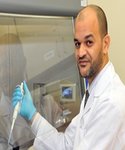
Biography:
Mohamed El Zowalaty has completed his PhD research work in 2011 at University of Minnesota and postdoctoral studies from Emory University School of Medicine. He is currently appointed as research fellow scientist of infectious diseases and virology at Biomedical Research Center, Qatar. He has published more than 25 articles in peer reviewed scientific journals and has been serving as an editorial board member of scientific virology and microbiology journals. Dr El Zowalaty has been recently featured in the New York Academy of Sciences 2015 meeting as a renowned member for his scientific achievements.
Abstract:
Bacterial and viral infectious diseases pose continuous threat to human and animal health. The current pipeline of anti-infective agents is limited in targeting emerging viral and bacterial pathogens. Over the past decade, nanotechnology has been an extremely hot research topic, among which gold nanoparticles have been intensively investigated in areas, like in vitro assays, in vitro and in vivo imaging, cancer therapy, and drug delivery, due to their super binding and unique optical properties. The preliminary use of nanostars has been recently reported in our study on the future application of nanostars as antiviral and antibacterial agents. It is noteworthy that this is the first study in literature to test the effect of gold nanoparticles using photothermal approach against influenza and coronaviruses. Both gold nanostars and polymersomes were functionalized with regions that attract viruses. After virus attachment, gold nanostars were excited using infrared wavelengths to destroy the virion. After attachment, polymersomes rearrange their structure to encapsulate the virus. Under both situations, viruses can be rendered inactive. Similarly, becoys or bacterial decoy nanoparticles are being studied for their effect on Pseudomonas aeruginoa and other highly resistant bacterial pathogens.
Filippo De Nicolellis
Fiumcello,Friuli Venezia Giulia, Italy
Title: Improving in the elderly the communication and availability towards vaccinal campaigns against influenza: A local project in primary health care in North East Italy
Time : 16:00 - 16:20

Biography:
Filippo de Nicolellis graduated at Rome University “La Sapienza” in 1986, where he specialized in Infectious Diseases in 1990. From 1995 to 2000, he worked as a Family Doctor in Doberdò del Lago/Doberdob (Gorizia) and since 2000 in Fiumicello, Udine, in Friuli Venezia Giulia, in the north-east of Italy. Since 2000, he has also been the President of the medical association “Croce Medica”, which deals with the organization of Health Services and Permanent Training and particularly with Primary Health Care and Emergency.
Abstract:
I will introduce a three-year project focused on developing e-communication and other tools in a rural area of Friuli Venezia Giulia, Italy. The Medical Association “Croce Medica” is making all efforts in Primary Health Care to increase the rate of people vaccinated against influenza. The association is promoting the use of posters in family doctor’s offices as well as of e-mails to communicate the patients’ dates and procedures for the vaccination against influenza. Furthermore the association e-mails are dispatched by its registered doctors about influenza as well as a request for information about the illness seasonal evolution in the various areas of Friuli Venezia Giulia. As a matter of fact, there has been an increase in the percentage of vaccinated people in the investigated area in the last year, compared to the average data in the territory of Bassa Friulana. I believe all efforts aiming at improving the communication with patients and explaining how to obtain the vaccination against influenza are useful in any case, and they have probably been crucial to achieve a better result than the ASS 5 average one.
Pedro Brandão dos Santos Pedrosa
Leibniz University of Hanover, Germany
Title: Biosafety challenges in face of new or emerging viral pathogens specially in the scenario of an outbreak, in hospitals and research laboratories as well
Time : 16:20 - 16:40

Biography:
Pedro Brandão dos Santos Pedrosa has a BSc in Microbiology and Immunology, and is a specialist in Biosafety by FIOCRUZ (IPEC). He has completed his first MSc in Immunology from USP (São Paulo State University). His virology experience comprises work with Dengue viruses, Hantaviruses, Mayaro virus, and some degree of training in BSL3 operation and scientific initial work in the Friedrich Loeffler Institut (FLI – INNT). He has 1 article published, 2 articles about to be published and several works presented in congresses on Virology.
Abstract:
The previous theory of the epidemiological transition, that was prevailing in great part of the developed world, has been challenged not only by the worst EHF (caused by EBOV) epidemic ever, which poses a real threat of secondary cases far from Western Africa, but also the endemic HFRS in some regions of Europe (ie. Finland and Germany), and the spreading of H9N2 Influenza type A among humans, WNV in North America, among other viral pathogens. The aim of this talk is not only to provide a conceptual framework of biosafety in face of a now logistically growing number of known viruses, but also to report a number of scientific works of clear relevance concerning the biosafety in the clinical virology and respective research, and finally to propose a multi-center project of research of biosafety in virological research.
Sakshi Sharma
Dayalbagh Educational Institute, India
Title: Mycoviruses infecting human pathogenic fungus

Biography:
I am Sakshi Sharma, 26 years old. I am currently working as a UGC Junior Research Fellow/ PhD Scholar from DEI. My study basically includes screening, identification, transmission, purification and characterization of mycoviruses. I got best paper presentation/ young system scientist award in the conference, Paritantra (System Society of India) in 2013. I received International Travel grant award by Science and Engineering Research Board (SERB), under the Department of Science and Technology (DST), New Delhi as a Young Scientist in 2011 to present an oral paper in International conference, Autoimmunity Congress Asia (ACA), Singapore. I have papers published in Indian and international SCI journals.
Abstract:
Candida albicans is widespread yeast; the infections can be short lived, superficial skin irritations to devastating, fatal systemic diseases. The confirmation of viruses in fungi commonly called Mycoviruses or VLP’s. In present study, this human pathogenic fungus was screened for the presence of virus like particles (VLP’s). Negative staining and transmission electron microscopy positively indexed this fungus for the presence of VLP’s. The concentration of VLP’s is good and the particles are isometric in shape with 40 to 66 nm in size. Further, treated with cycloheximide (50 µg/ml) revealed the complete elimination of VLP’s. Extraction and purification of nucleic acid from CF 11 column chromatography gave positive results whereas extraction from SDS phenol was found to be unsuccessful. For establishing the nature of nucleic acid, RNAse and DNAse treatment was followed. DNAse treatment and high salt (1SSC) did not revealed any band in Candida albicans whereas low salt (0.01SSC) RNAse test of Candida albicans reveals a band which concluded that the nature of nucleic acid is dsRNA. Subsequently, thermo melting confirms the nature of nucleic acid. Current finding may help in understanding and using the dsRNA mycovirus in fungal bio-control, fungal infections and also magnifies our knowledge of virus ecosystem and development.



